External links
- "Super Comet: After the Impact" at the IMDb
- Discovery Channel Canada program details. (link broken as at Mar 2012)
- Review in The New York Times
- Review in The Hindu
- DVD review at Digitally Obsessed
Super Comet: After The Impact (Also known as Armageddon: Der Einschlag) is a 2007 German-American speculative documentary produced by ZDF and the Discovery Channel. It was directed by Stefan Schneider.
The two-hour production hypothesizes the effects on modern-day earth of a large comet impacting in Mexico near the same location of the Cretaceous–Paleogene extinction event, the ancient impact of a comet or meteor that is believed to have triggered the mass extinction of the dinosaurs.
The film alternates between interviews with climatologists and researchers and dramatized scenes following several groups of people as they attempt to survive in the days and months after the disaster: a separated family in France, a pair of scientists in Hawaii, a man who manages to survive for a period of time near the ground zero impact in Mexico, and a tribe in Cameroon.
Discovery Channel released the film to DVD in North America on Dec.4, 2007.

An impact event is a collision between astronomical objects causing measurable effects. Impact events have been found to regularly occur in planetary systems, though the most frequent involve asteroids, comets or meteoroids and have minimal effect. When large objects impact terrestrial planets such as the Earth, there can be significant physical and biospheric consequences, as the impacting body is usually traveling at several kilometres a second, though atmospheres mitigate many surface impacts through atmospheric entry. Impact craters and structures are dominant landforms on many of the Solar System's solid objects and present the strongest empirical evidence for their frequency and scale.
Nemesis is a hypothetical red dwarf or brown dwarf, originally postulated in 1984 to be orbiting the Sun at a distance of about 95,000 AU, somewhat beyond the Oort cloud, to explain a perceived cycle of mass extinctions in the geological record, which seem to occur more often at intervals of 26 million years. In a 2017 paper, Sarah Sadavoy and Steven Stahler argued that the Sun was probably part of a binary system at the time of its formation, leading them to suggest "there probably was a Nemesis, a long time ago". Such a star would have separated from this binary system over four billion years ago, meaning it could not be responsible for the more recent perceived cycle of mass extinctions.

Cosmos: A Personal Voyage is a thirteen-part, 1980–81 television series written by Carl Sagan, Ann Druyan, and Steven Soter, with Sagan as presenter. It was executive-produced by Adrian Malone, produced by David Kennard, Geoffrey Haines-Stiles, and Gregory Andorfer, and directed by the producers, David Oyster, Richard Wells, Tom Weidlinger, and others. It covers a wide range of scientific subjects, including the origin of life and a perspective of our place in the universe. Owing to its bestselling companion book and soundtrack album using the title, Cosmos, the series is widely known by this title, with the subtitle omitted from home video packaging. The subtitle began to be used more frequently in the 2010s to differentiate it from the sequel series that followed.
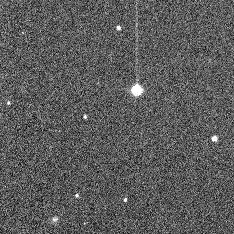
Asteroid impact avoidance encompasses the methods by which near-Earth objects (NEO) on a potential collision course with Earth could be diverted away, preventing destructive impact events. An impact by a sufficiently large asteroid or other NEOs would cause, depending on its impact location, massive tsunamis or multiple firestorms, and an impact winter caused by the sunlight-blocking effect of large quantities of pulverized rock dust and other debris placed into the stratosphere. A collision 66 million years ago between the Earth and an object approximately 10 kilometers wide is thought to have produced the Chicxulub crater and triggered the Cretaceous–Paleogene extinction event that is understood by the scientific community to have caused the extinction of all non-avian dinosaurs.

The Chicxulub crater is an impact crater buried underneath the Yucatán Peninsula in Mexico. Its center is offshore, but the crater is named after the onshore community of Chicxulub Pueblo. It was formed slightly over 66 million years ago when an asteroid, about ten kilometers in diameter, struck Earth. The crater is estimated to be 200 kilometers in diameter and 1 kilometer in depth. It is believed to be the second largest impact structure on Earth, and the only one whose peak ring is intact and directly accessible for scientific research.

In geology, catastrophism is the theory that the Earth has largely been shaped by sudden, short-lived, violent events, possibly worldwide in scope. This contrasts with uniformitarianism, according to which slow incremental changes, such as erosion, brought about all the Earth's geological features. The proponents of uniformitarianism held that the present was "the key to the past", and that all geological processes throughout the past resembled those that can be observed today. Since the 19th-century disputes between catastrophists and uniformitarians, a more inclusive and integrated view of geologic events has developed, in which the scientific consensus accepts that some catastrophic events occurred in the geologic past, but regards these as explicable as extreme examples of natural processes which can occur.
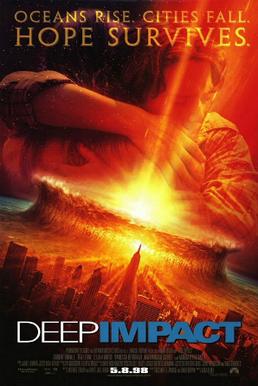
Deep Impact is a 1998 American science fiction disaster film directed by Mimi Leder, written by Bruce Joel Rubin and Michael Tolkin, and starring Robert Duvall, Téa Leoni, Elijah Wood, Vanessa Redgrave, Maximilian Schell, and Morgan Freeman. Steven Spielberg served as an executive producer of this film. It was released by Paramount Pictures in North America and by DreamWorks Pictures internationally on May 8, 1998. The film depicts humanity's attempts to prepare for and destroy a 7-mile (11 km) wide comet set to collide with Earth and cause a mass extinction.

An impact winter is a hypothesized period of prolonged cold weather due to the impact of a large asteroid or comet on the Earth's surface. If an asteroid were to strike land or a shallow body of water, it would eject an enormous amount of dust, ash, and other material into the atmosphere, blocking the radiation from the Sun. This would cause the global temperature to decrease drastically. If an asteroid or comet with the diameter of about 5 km (3.1 mi) or more were to hit in a large deep body of water or explode before hitting the surface, there would still be an enormous amount of debris ejected into the atmosphere. It has been proposed that an impact winter could lead to mass extinction, wiping out many of the world's existing species. The Cretaceous–Paleogene extinction event probably involved an impact winter, and led to mass extinction of most tetrapods weighing more than 25 kilograms.
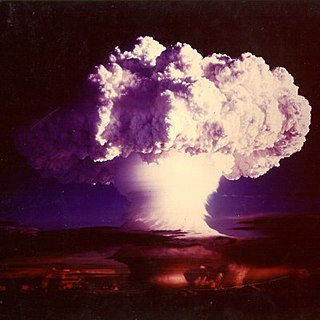
Human extinction is the hypothetical end of the human species, either by population decline due to extraneous natural causes, such as an asteroid impact or large-scale volcanism, or via anthropogenic destruction (self-extinction), for example by sub-replacement fertility.

Resident Evil: Extinction is a 2007 action horror film directed by Russell Mulcahy and written by Paul W. S. Anderson. A direct sequel to Resident Evil: Apocalypse (2004), it is the third installment in the Resident Evil film series, which is loosely based on the Capcom survival horror video game series of the same name. The film follows the heroine Alice, along with a group of survivors from Raccoon City, as they attempt to travel across the Mojave desert wilderness to Alaska and escape a zombie apocalypse.
"Bart's Comet" is the fourteenth episode of the sixth season of the American animated television series The Simpsons. It originally aired on Fox in the United States on February 5, 1995. In the episode, Bart Simpson accidentally discovers a comet, which is heading towards Springfield. The show's writing staff saw an issue of Time magazine that presented the threat of comets hitting Earth on its cover, and decided to create an episode in a similar vein. "Bart's Comet" contains references to Where's Waldo? and The Twilight Zone, and received positive reviews.

Nina Liu is an Australian actress of Chinese descent. She played Chloe in the television series The Secret Life of Us.

When Dinosaurs Roamed America is a two-hour American television program that first aired on the Discovery Channel on July 15, 2001. The show features the reign of the non-avian dinosaurs in America over the course of more than 160 million years, through five different segments, each with their own variety of flora and fauna.
The Younger Dryas impact hypothesis (YDIH) proposes that the onset of the Younger Dryas (YD) cool period (stadial) at the end of the Last Glacial Period, around 12,900 years ago was the result of some kind of extraterrestrial event with specific details varying between publications. The hypothesis is controversial and not widely accepted by relevant experts.

Life is a British nature documentary series created and produced by the BBC in association with The Open University. It was first broadcast as part of the BBC's Darwin Season on BBC One and BBC HD from October to December 2009. The series takes a global view of the specialised strategies and extreme behaviour that living things have developed in order to survive; what Charles Darwin termed "the struggle for existence". Four years in the making, the series was shot entirely in high definition.
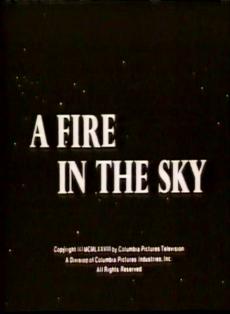
A Fire in the Sky is a made-for-television disaster movie that debuted on NBC on November 26, 1978. The movie is based on a story by Paul Gallico where the earth is threatened by a large comet, which impacts near Phoenix and causes massive destruction there. It is a Bill Driskill Production in association with Columbia Pictures Television.

On April 27, 2012, a multinational team of television studios staged an airplane crash near Mexicali, Mexico. An unmanned Boeing 727-200, fitted with numerous cameras, crash test dummies and other scientific instruments, was flown into the ground. The exercise was filmed for television.

The Cretaceous–Paleogene (K–Pg) extinction event, also known as the Cretaceous–Tertiary(K–T)extinction, was the mass extinction of three-quarters of the plant and animal species on Earth approximately 66 million years ago. The event caused the extinction of all non-avian dinosaurs. Most other tetrapods weighing more than 25 kilograms also became extinct, with the exception of some ectothermic species such as sea turtles and crocodilians. It marked the end of the Cretaceous period, and with it the Mesozoic era, while heralding the beginning of the current era, the Cenozoic. In the geologic record, the K–Pg event is marked by a thin layer of sediment called the K–Pg boundary or K–T boundary, which can be found throughout the world in marine and terrestrial rocks. The boundary clay shows unusually high levels of the metal iridium, which is more common in asteroids than in the Earth's crust.

Since the 19th century, a significant amount of research has been conducted on the Cretaceous–Paleogene extinction event, the mass extinction that ended the dinosaur-dominated Mesozoic Era and set the stage for the Age of Mammals, or Cenozoic Era. A chronology of this research is presented here.
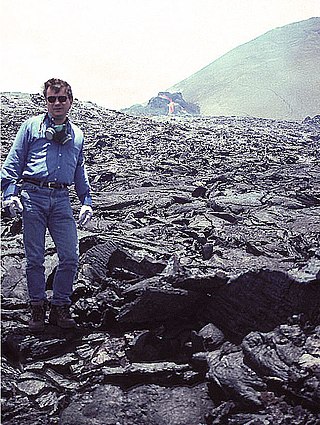
Michael R. Rampino is a Geologist and Professor of Biology and Environmental Studies at New York University, known for his scientific contributions on causes of mass extinctions of life. Along with colleagues, he's developed theories about periodic mass extinctions being strongly related to the earth's position in relation to the galaxy. "The solar system and its planets experience cataclysms every time they pass "up" or "down" through the plane of the disk-shaped galaxy." These ~30 million year cyclical breaks are an important factor in evolutionary theory, along with other longer 60-million- and 140-million-year cycles potentially caused by mantle plumes within the planet, opining "The Earth seems to have a pulse," He is also a research consultant at NASA's Goddard Institute for Space Studies (GISS) in New York City.